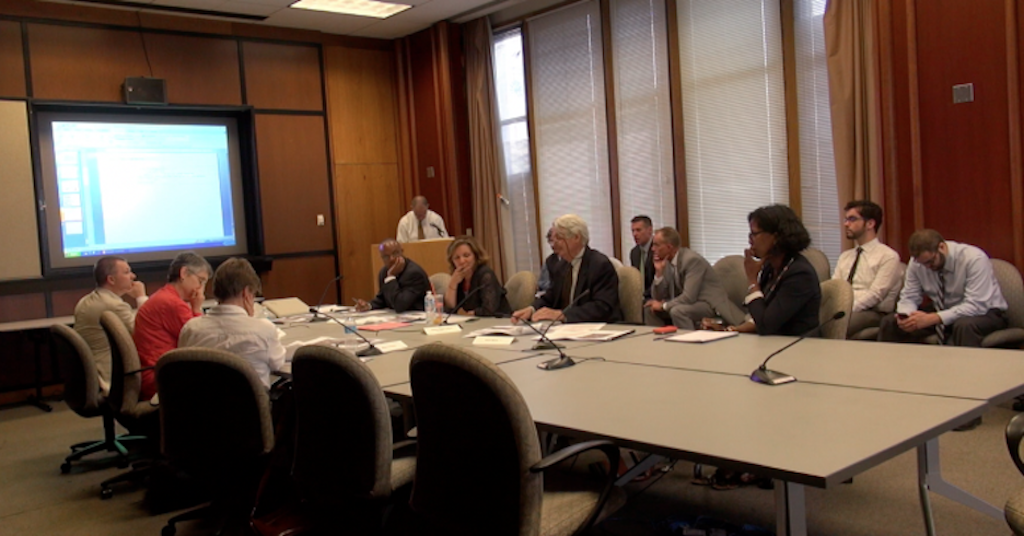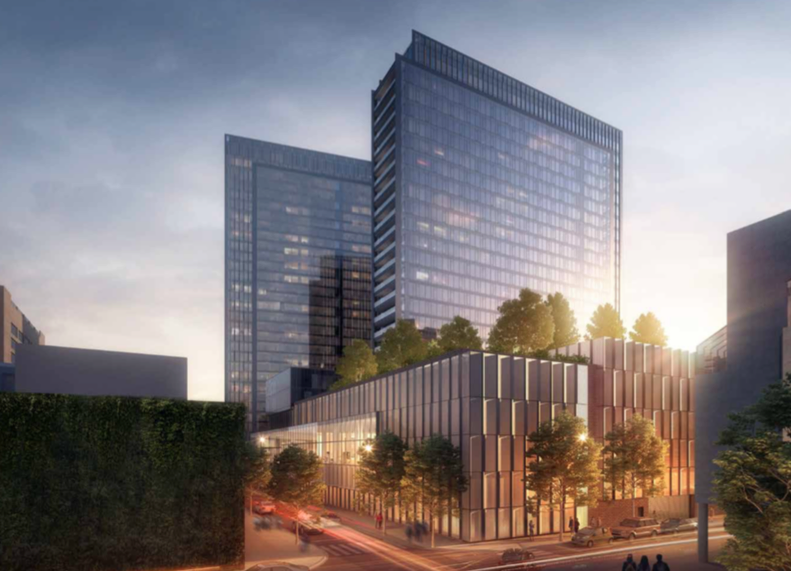If you want to develop a large project in Philadelphia, the zoning code compels you to go through the Civic Design Review process. Your architect has to assemble a packet that can run dozens of pages in length, with floor plans, renderings, elevations drawings, stormwater management plans, a complete streets guide, and landscaping designs, among other things. Packet in hand, you must present your project to the CDR board, and the board will offer feedback, possibly suggesting minor changes and sometimes suggesting significant changes. The board will then either vote to allow you to continue through the permitting process, or to bring you back for a second presentation.

Earlier this week, PMC Property Group came back to CDR for a second go round for their project at 23rd & Cherry after receiving some significant negative feedback at their first presentation. The project, in case you don’t recall, will entail a pair of residential buildings with a total of roughly 600 apartments and 200 parking spaces for residents, as well as a supermarket. According to Plan Philly, members of the CDR board took issue with the fact that the project doesn’t include underground parking, the lack of street presence on 23rd Street, and the skybridge between the towers, to name a few concerns. When PMC came back to CDR, they addressed none of these issues, only widening a bike lane and changing some building materials.

Even though PMC hardly made any changes to the project, there’s nothing further that the CDR board can do at this time. The code requires the developer to go before the CDR board, but the recommendations of the CDR board are non-binding. From where we sit, this is a perfect illustration that the CDR process is a huge waste of time and money. Those packets cost tens of thousands of dollars. Surely the members of the CDR board are not paid, and they spend hours poring over the packets and making recommendations that the developers aren’t required to follow. Neighbors and other interested parties come out to these presentations, registering their opinions as part of a non-binding process. Honestly, why does anybody bother?
To be clear, we love CDR. We get some of our best renderings from CDR packets, and since they show up online a few weeks before the meetings, we regularly find out about projects in the first place because of those CDR packets. But for everyone’s sake, it’s time for CDR to change. For all the time and money that goes into these presentations, the CDR board should have some teeth, some ability to influence developers to modify their projects. Otherwise, City Council should do away CDR entirely, and save everyone from the aggravation of a required process that doesn’t necessarily have any impact.
